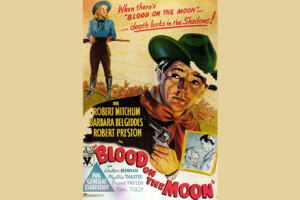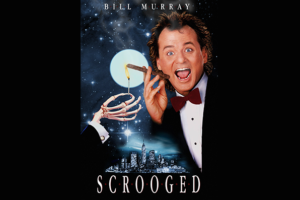
This American captain is no amateur. Well, neither am I. – The Enemy Below (1957)


Hello to all of the classic people that are returning. I am glad you are back. I want to welcome any new visitors. Today on Classic Movie Review, we are taking on The Enemy Below (1957).
I have always loved submarine movies because of the battle of wits with a limited sensor view of the enemy. And this movie has Robert Mitchum and some interesting “Star Trek” 1966–1969 and “Star Trek: TNG” 1987–1994 connections.
This was the sixth film directed by hoofer, turned film noir guy Dick Powell. I will talk more about this in the conclusion.
The movie has a decent 7.4 rating on iMDB.com.[1] On Rottentomatoes.com, the film does quite well, with 86 percent on the Tomatometer and 87 percent audience approval.[2]
The New York Times gives a very mixed review indicating they loved it or at least hated the film[3]. The review begins with the following:
It’s easy to see why Twentieth Century-Fox picked up “The Enemy Below,” the British novel by Comdr. D. A. Rayner. and made a movie out of it. The story about a surface vessel in a duel to the death with an enemy undersea craft has a ready-made element of running suspense that would give an automatic unity to any film hewing to the basic narrative of the original…The melodramatic exchange of blows between an American destroyer-escort … and a German submarine are graphically splashed across the screen in color. By their very nature, such scenes make a good spectacle for the screen.
In other respects, however, the film fails to live up to its literary model. Commander Rayner effectively conveyed the relish of both a seaman and a chess player when he pitted these two equally powerful and equally determined adversaries against each other in a lonely expanse of sea far beyond the help of the countries they represented…
Instead we have something closer to a standard naval melodrama with only a faint overlay of the psychological duel between the two commanders’ remaining…
It was implicit in the book that such tough realistic warriors of the sea were aware of this sort of sentiment right along even as they ironically hounded and pursued each other to the death.
Actors – The Enemy Below (1957)
Returning
The great actor Robert Mitchum played Capt. Murrell returned to command after having another ship sunk from underneath him. This actor was covered in the great Film Noir, Out of the Past (1947).
Theodore Bikel was believable as ‘Heinie’ Schwaffer, second in command of the German sub. This actor was covered in another Film Noir, I Want to Live! (1958).
New
Curd Jürgens plays the German U-boat skipper Von Stolberg. Jürgens was born in German in 1915. Jürgens began working as a journalist, but his actress wife, Louise Basler, convinced him to take up acting. He spent the early part of his career working on the Austrian stage.
Jürgens continued to work in Nazi Germany until a dispute in 1944 landed him in a labor camp, and he was designated “politically unreliable.”
Jürgens began working in the German film industry in 1935. Following World War II, Jürgens continued to make films in Europe. His first American film was The Enemy Below (1957). He is known for The Devil’s General (1955), And God Created Woman (1956), The Blue Angel (1959), The Enemy Below (1957), The Longest Day (1962), Lord Jim (1965), The Battle of Britain (1969), and Bond film, The Spy Who Loved Me (1977). Jürgens died in 1982.
David Hedison was cast as Lt. Ware, second in command of the American Destroyer. Hedison was born in Rhode Island in 1927. Hedison served in the U.S. Navy before attending Brown University. At Brown, he began acting on stage. Hedison later moved to New York and studied at Neighborhood Playhouse School of the Theatre. He continued to work on stage.
Hedison started working on television in 1954. His first film role was in The Enemy Below (1957). The following year, he had an important role in The Fly (1958). Other films include The Lost World (1960), two James Bond films, Live and Let Die (1973), and Licence to Kill (1989).
I would have to say Hedison was primarily a television actor, and that is undoubtedly where I know him from. Hedison was on 16 episodes of “Five Fingers,” from 1959–1960. He played Captain Crane in 110 episodes of “Voyage to the Bottom of the Sea,” 1964–1968.
He was on the soaps with 72 episodes on “Another World” from 1991–1995. Hedison was also in 50 episodes of “The Young and the Restless,” 2004. He was a regular on many of the most popular television shows each year. Hedison died in 2019.
Story – The Enemy Below (1957)
As the credits roll, a World War II-era destroyer slices through the open ocean. At least once, the view is through a U-boat periscope. The location is the South Atlantic. The Doctor (Russell Collins) puffs a pipe as he walks the deck and talks to the crew. The men are bellyaching about the new captain, complaining that he has no experience and can jeopardize the crew.
Doc almost goes to talk to the captain but decides to go to the wardroom where Lt. Ware (David Hedison) and other officers, including Ens. Merry (a very young Doug McClure) is playing cards. They are also concerned about the new captain, who has not left his cabin so far on the voyage.
The Doc tells the officer that the new skipper, Capt. Murrell (Robert Mitchum) had his last ship torpedoed and spent 25 days in a life raft. The general opinion is that the ship will not see much action, and it will be easy duty for the new skipper.
As night falls, the ship heads into a storm. Everything is quiet on night watch until the radar picks up a blip. Lt. Ware jumps into action and calls the captain. The captain allows Ware to make the decisions. But is it because he doesn’t know what to do? The ship steams toward the target. The target is on a heading of 140.
The destroyer steams toward the target. The men rise from their bunks and wait for orders. Finally, Capt. Murrell calmly makes his way through the crowd and goes to the radar scope. Murrell asks the radar operator his opinion of the target. The operator thinks it may be the conning tower of a submarine. Murrell calls Ware to slow the ship to firm up the radar contact. They will wait for sunrise to approach the target.
Inside the german submarine, the sonar operator is getting a signal that the destroyer is behind them. The pigboat captain Von Stolberg (Curd Jürgens), his executive officer, and friend ‘Heinie’ Schwaffer (Theodore Bikel) are with the sonar operator. Stolberg orders a 20-degree turn to verify that their contact is genuine.
On the destroyer’s bridge, Murrell knows that the German is making sharp turns to see if what is tracing them responses. Crazy Ivans? Murrell cut the engines on his ship.
On the German sub, the captain is satisfied that he is not being followed and has the sub return to course 140.
Murrell resumes following the sub and warns the crew that the sub will make more course changes and speed up or slow down to see if the sub is being followed. This is very similar to the Crazy Ivan turns used much later in The Hunt For Red October (1990), a movie I believe owes much to today’s film.
Murrell briefs the crew and expects to battle with the sub after sunrise.
On the sub, Stolberg looks contemptuously at a sign that says, ” Fuhrer Befiehl Wir Folgen roughly, Leaders order, we follow. Kunz (Arthur La Ral), a dedicated Nazi, comes forward. Stolberg leaves Kunz in charge while he gets some rest. But first, he asks to talk to Heinie.
Stolberg complains about Kunz and the leadership back in Germany. Heinie wants to dive in case their sonar contact is genuine. Stolberg says they can’t because they have 48 hours to meet with raider ship M where they will pick up a British codebook and then make their way back to Germany. Stolberg is more concerned with the getting home part of the mission.
Stolberg is worn down by his years in submarines extending back to the first World War. He also speaks of his two sons killed in the war. Stolberg talks about the better days of World War I when everything was more basic and fallible. He doesn’t like the level of automation that has crept into the machines. Heinie listens but doesn’t weigh in on the politics. When Stolberg falls asleep, Heinie carefully covers him with a blanket.
Murrell is on the ship’s deck and calls Lt. Crain (Frank Albertson) up to ask about the speed of the depth charge crews. Murrell is told they are pretty green, and reloading takes about 3-minutes. Murrell demands better performance.
Doc encourages Murrell to rest, but the captain insists on staying on deck. Doc says that Murrell is a hunter. Murrell tells the Doc that he was a freighter officer, not a professional Navy man. Ware reports that the sub has increased speed, and Murrell instructs him to match the speed and movement. Murrell has resigned himself to the idea that war will always be with humanity. Murrell also says that he was married to an English woman who was killed on his way to America during a torpedo attack, yet he doesn’t have hate. Murrell returns to work and tells the engine room to stop making black smoke before dawn.
I know how you make black smoke on a ship, but if anyone knows how to make it white, please leave a comment below.
The day dawns clear and bright. The destroyer crew is sent to their battle stations. Murrell prepares a message to be sent as soon as the attack begins. They increase speed closing on the sub. The German sub is on the surface and has to make a crash dive. Murrell hopes to get close enough to use his deck guns before the sub disappears. Suddenly Murrell slows his ship and changes course, giving the sub a free show with their aft torpedoes. When questioned by Ware, Murrell explains that once the aft tubes are fired, the German can’t easily reload them, and the destroyer can make free attacks on the back of the sub. Murrell has made calculations on when the German sub will fire.
Stolberg is surprised that the destroyer is presenting such a tempting target. He has the sub come to periscope depth of 80 meters. Stolberg orders an attack from the stern tubes as Murrell predicted. The Germans fire the two aft torpedoes.
Murrell turns the destroyer just in time to avoid the two torpedos streaking by his ship. Murrell begins his first attack run.
Stolberg has the sub go to 100 meters with a heading of 140 degrees.
The destroyer uses sonar to track the sub. The destroyer crosses the tail of the sub and comes to 140 degrees. The depth charges are set for 75 meters.
Stolberg divers to 150 meters, and the depth charges have to be reset. Murrell orders the charges drop, and one sailor loses his fingers because he is too slow. No harm is done to the sub other than a bit of shaking. The sub releases oil to confuse the sonar. The sub has turned to 180. Murrell has the depth charges reset for a deeper depth. Stolberg reversed direction and comes up to 50 meters, ending directly under the destroyer. The Americans have lost the sub.
Murrell goes to the mapping room and estimates where the sub will be if it returns to 140. They have 30 minutes to determine if the captain is right. Murrell uses the time to visit the injured man and apologize for the accident. The injured man was a watchmaker in civilian life.
A dispatch comes in, and the officer meet to discuss the next move. Other destroyers are coming to aid the hunt for the sub, but it will be at least half a day. They also know the sub is heading to meet with a well-armed German raider ship.
Stolberg brings the sub up to periscope depth, the destroyer makes another attack run, and the sub has to emergency dive. Again, the depth charges shake the German sub but do not destroy it. Stolberg takes the sub down to the bottom, which is over 300 meters deep, and the sub should not be able to withstand the pressure.
Murrell knows what the German has done, so he brings his ship to a full stop. The captain asks for silence on the ship. The Americans are still using the sonar but in passive mode. No pings.
In a unique film transition, they follow a fishing line from the ship into the water and then continue to the sub. Men on both vessels are reading and waiting.
On Heinie’s advice, the submarine rises from the bottom and takes a heading of 140. Murrell puts the destroyer and 140, and the hunt is on again. Once they pinpoint the sub, Murrell calls a conference with the ship’s officers and senior NCOs. Murrell plan is to run in drop charges and fall back. They will keep doing this to slow the sub down and wait for support. The long battle is hard on both vessels as the men are tense. Stolberg has to calm down a man that has gone mad during the attack. The hardcore Nazi member of the crew wants to surrender. Stolberg has a rousing 18th-century German march, “Der Dessauer Marsch,” played to motivate the crew. The American sonar picks up the noise from the song.
Murrell orders the ship in for another attack. The sub sends an oil slick. Murrell orders his ship to 140 to play the cat-and-mouse game. Stolberg asks what direction Murrell has been turning the destroyer after each attack. He realizes that Murrell has turned in the same direction twice. He says if the Americans do it again, although they will not have time to raise the periscope, they will fire all of their torpedoes in a widespread pattern in hopes of hitting by luck.
Murrell orders another attack and turns to starboard following the attack. Four torpedoes are fired at the ship. Murrell orders evasive turns, but it is too late. The destroyer is hit mid-beam in the forward fireroom. Murrell orders mattresses burned on the deck to look worse off than they are. Murrell asks the engine room to be able to give the ship one last blast of power. Murrell orders most of the crew to abandon the ship.
Stolberg watches from periscope depth. He falls for the trick. Stolberg orders the sub up for a surface attack. The Germans signal that they have five minutes. The Americans respond, “message received and understood.” Murrell tells the gun crew to fire first at the sub’s stern and then the deck gun. After that, he is to keep firing.
The Germans get ready to fire a torpedo. Murrell orders full power and then tells the engine crew to abandon the ship. Both sides hit each other with their guns. With the destroyer moving toward the sub, Stolberg orders detonators set and the sub abandoned.
Murrell rams the sub driving his hull onto the sub’s deck. Murrell orders the other men off the ship as he watches the Germans jump from the sub. Heinie is missing, and Stolberg goes after him. Heinie is wounded, but the German captain gets him to the top of the sub. Stolberg sees Murrell and gives him a salute. Murrell returns the salute. This harkens back to the early days of World War I when pilots would still salute each other.
Murrell throws a rope for the two Germans as the detonators tick down. Murrell’s ship is about to go down as well. Stolberg gets the rope attached and sends Heinie across. When Ward gets to the lifeboat, he finds that Murrell is still on the destroyer. He orders the lifeboat in close to help. Stolberg crosses on the rope hand over hand. Stolberg insists on carrying Heinie because he is his friend. Murrell helps.
Americans from the lifeboat and Germans from the water all climb aboard the destroyer to save their captains. Once they are clear, the sub explodes, and the destroyer also goes down.
Later the relief destroyers arrive and save most of the crews. They have a funeral for Heinie. The Doc tells Murrell that he has seen a reason for hope. Murrell and Stolberg share cigarettes. Macho man. Stolberg says he survived because of Murrell. Murrell says. “next time, I won’t throw you the rope.” Stolberg responds, “I think you will.” Oh, man, that’s how America should be!
Conclusion – The Enemy Below (1957)
First things first. This movie is the same story as “Star Trek” 1966-1969, Season 1, Episode 14, “Balance of Terror,” aired in December 1966. In “Balance of Terror,” a cloak-equipped Romulan ship crosses the Neutral Zone. The ship’s commander is played by Mark Lenard, who would later play Sarek, Spook’s father. As Caption Kirk on the Enterprise, William Shatner detects and follows the hidden ship in what is clearly a destroyer versus a submarine.
Theodore Bikel played a German in this film. He had a second career as a singer of Jewish, Russian, and gypsy folk music. Bikel played a Russian submarine commander in the screwball comedy The Russians are Coming, The Russians are Coming (1966). Much later, he played Klingon Worf’s adoptive father, Sergey, on “Star Trek: TNG” 1990.
Director Dick Powell shot two endings for this film. One where both Captains lived and one where they both died. These were shown to test audiences, and the ending where they both lived was overwhelmingly chosen.
The German U-Boat used in this film looked like a luxury liner with plenty of room and amenities. The West German film Das Boot (1981) showed a much more realistic depiction of a submarine. If anyone knows why submarines were called pig boats, please leave a comment.
World-Famous Short Summary – Don’t mess with Mitchum.
This show is now completely free and independent, brought to you without ads. If you enjoyed the show, please subscribe and leave a review where you get your podcasts. It really helps the show get found.
As a technical note, references and citations are listed for each show on the site at classicmovierev.com.
Beware the moors.
[1] https://www.imdb.com/title/tt0050356/
[2] The Enemy Below – Rotten Tomatoes
[3] https://www.nytimes.com/1957/12/26/archives/duel-to-the-death.html










Leave a Reply
Your email is safe with us.